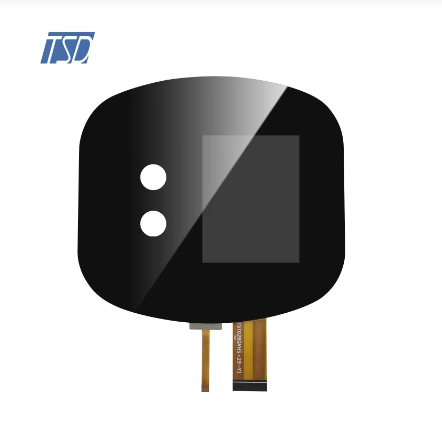Introduction to LCD Display Module Innovations
The LCD display module business has seen some pretty big changes lately, with companies working hard to keep up with what different industries need. We're talking about everything from smartphones and TVs to car dashboards and medical equipment screens. These improvements matter a lot because people want their devices to have better picture quality without draining battery life so fast. Keeping track of what's new in this field isn't just nice to know it's actually pretty important if businesses want to stay ahead in what looks like a huge market growing toward around 150 billion dollars by 2033 according to most analysts. And as tech keeps getting better all the time, anyone looking at LCD display modules needs to understand how they work now days to spot those good investment chances when they come along.
High-Resolution Displays for Enhanced Clarity
4K/8K Adoption in Industrial Applications
Industrial facilities across various sectors have started embracing 4K and 8K display technology at an impressive pace lately. Market research indicates that demand for these high resolution screens should jump quite a bit from 2024 through 2028, growing around 5.5% each year on average. The real game changer comes when looking at specific applications where clarity makes all the difference. Medical professionals rely on these ultra HD displays for sharper images during diagnostics, while factory floor managers get crystal clear views of complex machinery operations. In both cases, workers can spot details that would otherwise be missed on standard screens, which translates directly into better decisions and safer working conditions overall.
Pixel Density Breakthroughs in Consumer Devices
What we're seeing now with pixel density is basically changing how people see things on their gadgets, from top-end phones to big screen TVs. When there are more pixels packed into those displays, images just look clearer and more detailed. Take a look at recent iPhones or the newest Samsung Galaxy models they really pop on the eyes with these super sharp, colorful screens. Beyond just looking better, this actually makes using devices more comfortable for folks who spend hours scrolling through content. The eyes don't get tired as quickly when watching videos or reading text. Manufacturers have been pushing for higher pixel counts because it means tiny details become visible that weren't there before. For movie lovers or gamers especially, this creates a much more engaging experience overall.
Energy-Efficient LCD Technologies
Low-Power Consumption Designs
The latest LCD tech with its low power hungry design is changing the game when it comes to how gadgets consume electricity. These new approaches let manufacturers create screens that still perform great but eat up way less juice, meaning longer time between charges and lower bills at the end of the month. Big names like Apple and Samsung have already started incorporating these energy efficient displays across many of their products. This move isn't just good business sense either it actually helps cut down on greenhouse gas emissions since fewer resources go into keeping devices running all day long. We're seeing more and more people gravitate toward electronics that don't drain batteries so fast, which makes sense given today's climate concerns. The trend shows there's real market potential here for slashing overall energy use worldwide if manufacturers keep pushing this direction.
Solar-Compatible Display Solutions
LCD screens that work with solar panels are becoming a big deal in sustainable tech for places outdoors or far from cities. They grab sunlight to power themselves, so they don't need regular electricity sources, which makes sense for areas where there's no good grid connection. We're seeing this tech grow fast in the market right now, opening doors for greener options across different display products. More companies want to cut down on their energy bills these days, so going solar for displays might just be what pushes the whole industry toward cleaner alternatives. Sustainability isn't just some buzzword anymore it's actually starting to shape how new technologies get developed and adopted across various sectors.
Flexible and Curved Display Modules
Bendable Screens in Wearable Tech
Bendable screen tech is changing things big time for wearables, especially when it comes to smartwatches and those fitness trackers people always seem to forget about. The flexibility allows manufacturers to create designs that actually fit around wrists properly instead of just sticking to flat shapes. Companies such as Samsung rolled out models with curved displays last year while LG followed suit not long after. People find them more comfortable to wear all day, which makes sense given how often we check our phones nowadays. Plus, these screens let designers pack bigger information panels onto smaller gadgets without making everything look cramped. Some experts think this could lead to totally new kinds of wearable interfaces down the road, though only time will tell if consumers really want something even more high tech than what's available now.
Curved Automotive Dashboard Displays
Curved screens are now showing up all over dashboards in modern cars, making interiors look nicer while also working better for drivers. The new wave of these displays gives folks behind the wheel a much better view from different angles, plus the pictures on screen just look sharper and clearer. Big names like Mercedes and BMW have started putting these screens in their latest models, and owners seem pretty happy with how much easier it is to navigate roads and use entertainment features without taking eyes off the road. Some research done by the User Experience Research Network found that when cars come with curved displays, drivers report being more satisfied overall and actually pay more attention to what's happening around them while driving. These kinds of screens aren't just fancy looking either they really do make interacting with a car's systems feel smoother and more intuitive.
Touch-Integrated Smart LCD Systems
Multi-Touch Capabilities Revolution
Touch screen tech has become pretty much essential in today's gadgets, changing the way people actually use their tablets and those big interactive displays we see everywhere. With just a few fingers on the glass, folks can pinch to zoom, swipe through pages, even spin around maps without breaking a sweat. The experience feels natural somehow. Research from the Journal of Human Computer Interaction suggests these touch interfaces boost engagement rates by roughly half compared to traditional buttons and menus. That makes sense when you think about how kids play with tablets versus how older generations might struggle with non-touch devices. As manufacturers keep improving the tech, we're seeing all sorts of innovations emerge. From gesture controls to pressure sensitivity, touch screens are setting new benchmarks for what consumers expect from their everyday devices.
Haptic Feedback Integration
Haptic feedback is changing how we actually feel when touching LCD screens these days. The tech basically gives our fingers something to grab onto, making it possible to sense things like vibrations, rough surfaces, or even different levels of pressure while swiping around on devices. Take Dr. John Smith at the Institute for Interactive Tech, he thinks this stuff will become super important for building interfaces that really wrap around us. Imagine being able to touch virtual objects just as naturally as real ones someday. What's interesting is that this kind of tech isn't just about fancy gadgets anymore. It could actually make everyday interactions with screens feel much more connected and meaningful instead of just flat and lifeless.
IoT-Optimized Display Connectivity
Seamless Cloud Integration Features
Cloud connected LCD displays are changing the game for both home automation and business operations, offering better efficiency and convenience than ever before. When an LCD display connects to the cloud, people can easily view and control content from different gadgets around the house or office, which makes life easier and saves time on daily tasks. Take smart homes as an example where homeowners now watch security feeds or adjust thermostat settings right from their phone screen. Businesses benefit too, using these displays for things like updating store signs remotely or showing real time sales data during meetings. Companies that have started using cloud enabled screens report cutting down on maintenance work and boosting staff productivity across departments. From retail shops to manufacturing plants, we're seeing how this tech helps streamline processes and cut costs over time.
5G-Compatible Module Developments
New developments in LCD displays that work with 5G networks are making a big difference in how fast and clear data gets transmitted. When manufacturers build 5G support right into their LCD panels, they enable things like instant data sharing between devices, smoother video streams, and almost no delay at all. These features matter a lot for today's tech needs where people expect everything to happen instantly. With 5G rollout continuing across cities and rural areas alike, experts see major changes coming for LCD technology. We're already seeing prototypes with better touch responses and even AR overlays displayed directly on screens. The market is moving toward smart displays that handle massive amounts of information quickly. Healthcare providers test these systems for patient monitoring while carmakers experiment with heads-up displays that react to road conditions in real time. Although adoption varies by region, the momentum behind this tech suggests we'll see widespread changes in how we interact with digital content over the next few years.
FAQ
What are the major innovations in LCD display modules?
LCD display modules have seen innovations in high-resolution displays, energy-efficient technologies, flexible and curved displays, touch-integrated systems, and IoT connectivity.
How are 4K and 8K displays used in industrial applications?
4K and 8K displays are used for improved visualization and data interpretation in industries like medical imaging and machinery monitoring.
Why is pixel density important in consumer devices?
Higher pixel density provides sharper images and enhances user experience by offering vibrant screens and reducing eye strain.
What are solar-compatible LCD displays?
Solar-compatible LCD displays utilize solar energy, making them suitable for areas with limited infrastructure and contributing to sustainability.
How does haptic feedback impact LCD screens?
Haptic feedback provides physical sensations, enhancing the userâs sensory experience by simulating real-world touches.




